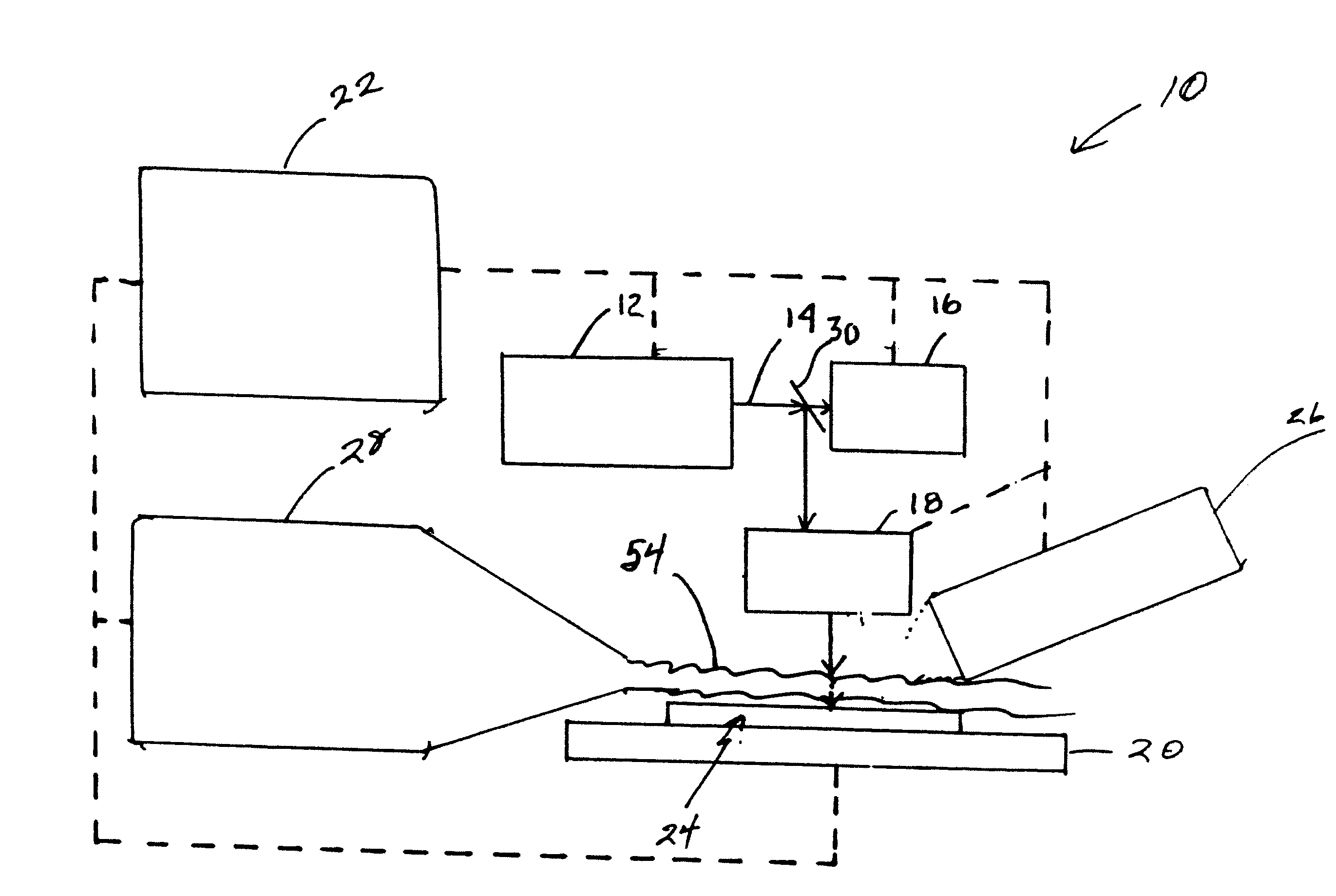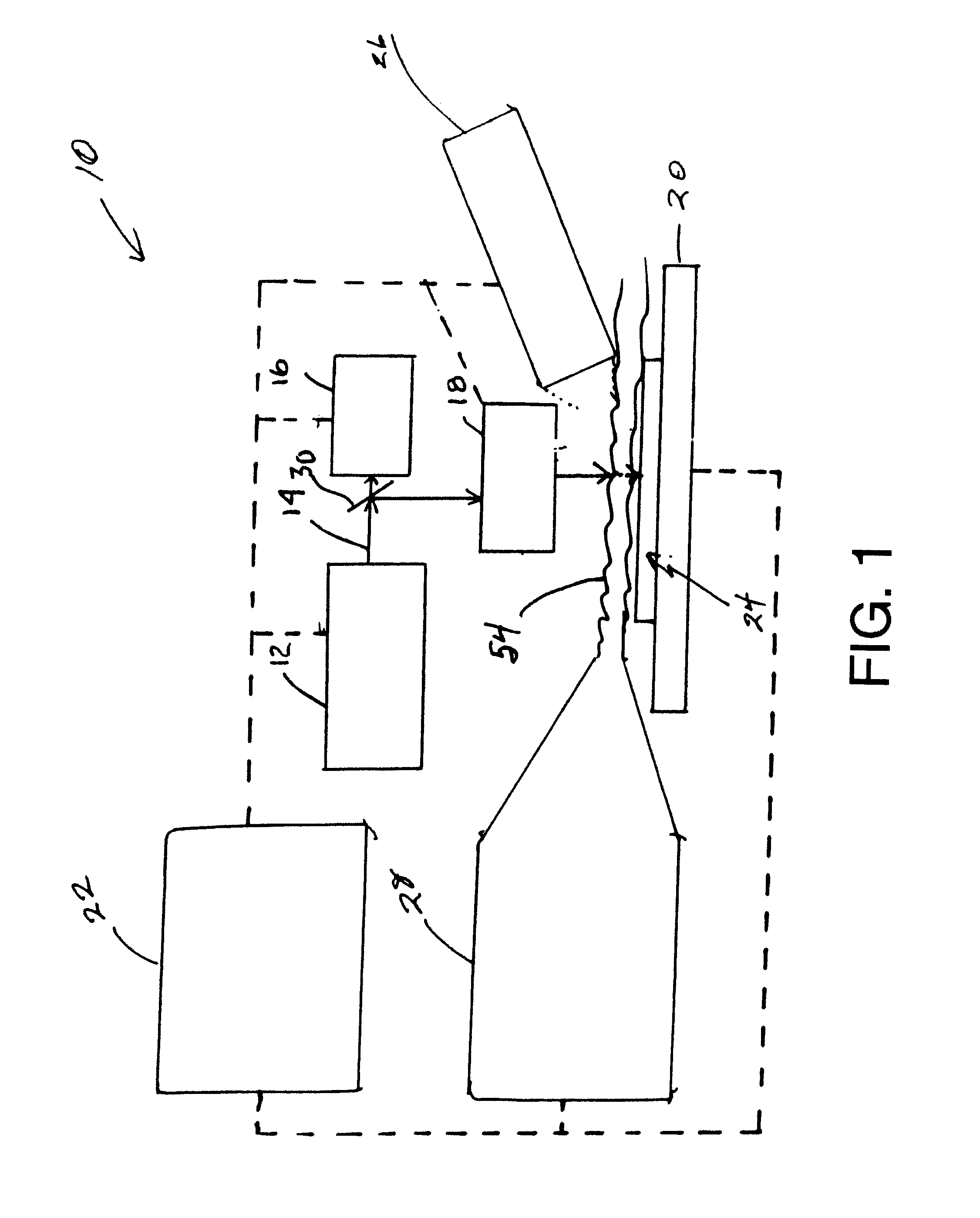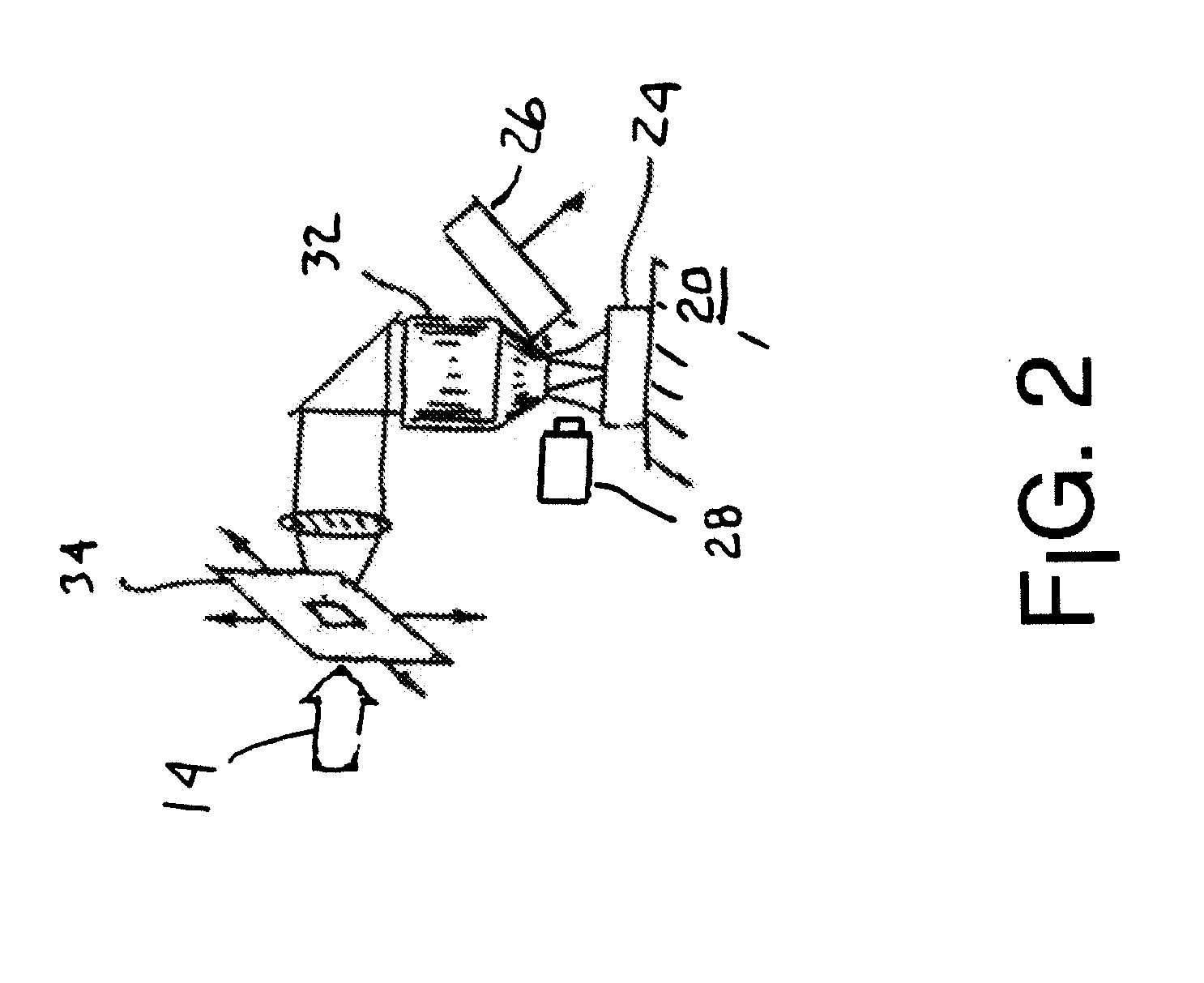Debris minimization and improved spatial resolution in pulsed laser ablation of materials
a laser ablation and material technology, applied in the field of modifying structures by laser, can solve the problems of reducing the optical transmission of the underlying quartz surface, affecting the ablation effect, so as to reduce the concentration of ablation products and reduce the laser pulse energy
- Summary
- Abstract
- Description
- Claims
- Application Information
AI Technical Summary
Benefits of technology
Problems solved by technology
Method used
Image
Examples
Embodiment Construction
)
[0021]Referring to FIG. 1, there is shown a laser ablation system 10 incorporating features of the present invention. Although the present invention will be described with reference to the embodiments shown in the drawings, it should be understood that the present invention can be embodied in many alternate forms of embodiments. In addition, any suitable size, shape or type of elements or materials can be used.
[0022]As shown in FIG. 1, the laser ablation system 10 removes material from a sample 24, FIG. 2, by means a laser 12. The laser 12 outputs a laser beam 14 having an energy minimally above the threshold of ablation for the sample 24 to minimize debris formed. Further, the debris formed may also be removed by a flowing fluid 36, FIG. 3, such as a gas or a liquid, and further the flowing liquid may have the refractive index matched to a high resolution immersion objective lens material and or the material being removed to enhance spatial resolution.
[0023]The refractive index ma...
PUM
| Property | Measurement | Unit |
|---|---|---|
| wavelength | aaaaa | aaaaa |
| size | aaaaa | aaaaa |
| energy | aaaaa | aaaaa |
Abstract
Description
Claims
Application Information
 Login to View More
Login to View More - R&D
- Intellectual Property
- Life Sciences
- Materials
- Tech Scout
- Unparalleled Data Quality
- Higher Quality Content
- 60% Fewer Hallucinations
Browse by: Latest US Patents, China's latest patents, Technical Efficacy Thesaurus, Application Domain, Technology Topic, Popular Technical Reports.
© 2025 PatSnap. All rights reserved.Legal|Privacy policy|Modern Slavery Act Transparency Statement|Sitemap|About US| Contact US: help@patsnap.com



